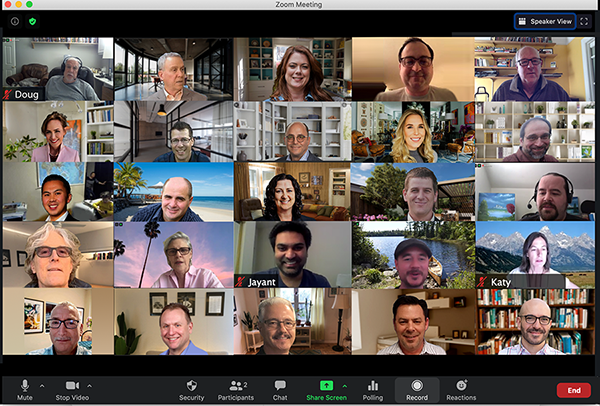CEA Holds Quarterly Meeting in June 2020
California Energy Alliance held its second Quarterly Member Meeting of 2020 last week on June 10, in its first all-virtual format. Fifty attendees from CEA’s diverse membership participated in the sessions, which included presentations by Josh Dean, Executive Director of San Diego Green Building Council, and Chris Ruch, Director of Training for the National Energy Management Institute. The meeting included breakout sessions on different CEA committee initiatives: Outcome-Based Code; Cost-Effectiveness Metrics; Code Compliance Improvement and the Central Nonresidential Data Repository proposal; and Indoor Environmental Quality.
CEA Announcements
CEA’s 2020 membership drive has resulted in 15 new members between February and May
CEA proposals and recommendations submitted in April to the California Energy Commission (CEC) for the 2022 code cycle for Title 24 Part 6 include:
A proposal for an Exceptional Designs compliance mechanism to include novel compliance approaches for non-residential new buildings that don’t align with the existing performance or prescriptive approaches
Recommendations for a Central Nonresidential Data Registry/Repository (CNDR) to support improved compliance and enforcement of California's Building Energy Efficiency Standards
Recommendations on enhancement to Title 24 on Demand Management, in collaboration with the Codes and Standards Enhancement team
CEA recently published a whitepaper titled “Legislation Needed to Modernize and Harmonize Energy-Related Program Cost-Effectiveness Metrics and Methodologies”
Presentations
Josh Dean’s presentation summarized his paper, “Developing a Policy Framework for an Outcome-Based Energy Code in California, and Its implications.” The paper, an important piece of groundwork for CEA’s Outcome-Based Code initiative, identifies legislative and regulatory pathways in California which allow nonresidential building energy codes to establish compliance and enforcement mechanisms extending past a building's design, construction, and issuance of certificate of occupancy phases.
Chris Ruch’s presentation focused on the role of ventilation, and especially carbon dioxide levels, in overall indoor environmental quality and building health. The COVID-19 pandemic has in a short time drawn attention to the widespread deficiencies of many installed ventilation systems and the need for increased outside air, better maintenance, and revised codes and standards
Breakout Sessions
Outcome-Based Code -This session discussed CEA’s upcoming research project that will look at modeled vs measured energy use in California buildings
Cost Effectiveness Metrics - This session focused on revisions to the recent cost-effective metrics whitepaper, and on next steps for this important initiative
Code Compliance Improvement - This session discussed the recent CNDR proposal to the CEC; the need to document code issues of complexity and irrelevance, and to identify new topics, audiences, opportunities for CEA involvement in code compliance improvement, education and outreach.
Indoor Environmental Quality - The primary subject of this breakout session was to consider the formation of a subcommittee focused on all aspects of indoor environmental quality: lighting and health, including UVC/germicidal lighting; ventilation. It was decided that such a subcommittee was indeed worth pursuing, pending identifying committed members and specific objectives
Summary
CEA continues to grow and to provide an unprecedented level of access to the process of making codes, standards and policy that benefit California energy stakeholders and set the best course for California’s energy future.
“We were very pleased that participation in our first all virtual quarterly meeting was so high, and that we were able to accomplish everything we typically do at our in-person meetings. We welcomed many new members for the first time and will greatly from their fresh perspective and the additional resources they bring to CEA. We were also particularly happy to see that the presentations, ensuing discussions, and the breakout sessions resulted in the very high level of cross-disciplinary exposure to ideas and problem solving approaches that CEA was founded to achieve,” said CEA Co-Chair Doug Avery.

